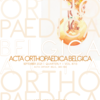Reduction of radiation exposure in scoliosis monitoring using flat detector and pulsed fluoroscopy technology
scoliosis ; digital imaging ; fluoroscopy ; radiation exposure
Published online: Nov 22 2021
Abstract
A new flat detector and pulsed fluoroscopy technology is available to further reduce radiation exposure in radiological monitoring during scoliosis treatment in children and adolescents. The aim of this study is to compare different settings of the system (opening area(OA) and image quality settings (IQS)) in order to find the optimal parameters with high image quality and the lowest possible radiation exposure. Therefore, we examined four cadaver spines (T1 to sacrum) with the flat detector technique using digital pulsed fluoroscopy and simulated the abdominal soft tissues. The images were merged and evaluated by three different investigators using an established scoring system. For comparison, we used digital radiography images of the cadaver spines. The values for the DAP increased from the small OA (33% ; 0.56 µGy·m²) to the maximum OA (100% ; 0.82 µGy·m²) by 45% (p = .003) and from the low image quality setting (0.57 µGy·m²) to the high setting (0.84 µGy·m²) by 48% (p = .028). Despite the low DAP, the setting 33% OA achieved the best point values for image quality, therefore this setting is clearly preferred. Using a digital fluoroscopy system allows a significant reduction of radiation exposure by a factor of 7.5 (3.88µGy·m² to 0.5µGy·m²) compared to slot- scanning x-ray (EOS). Due to this success, the flat detector and pulsed fluoroscopy technology can be an alternative to established methods such as X-ray and EOS in clinical use.
